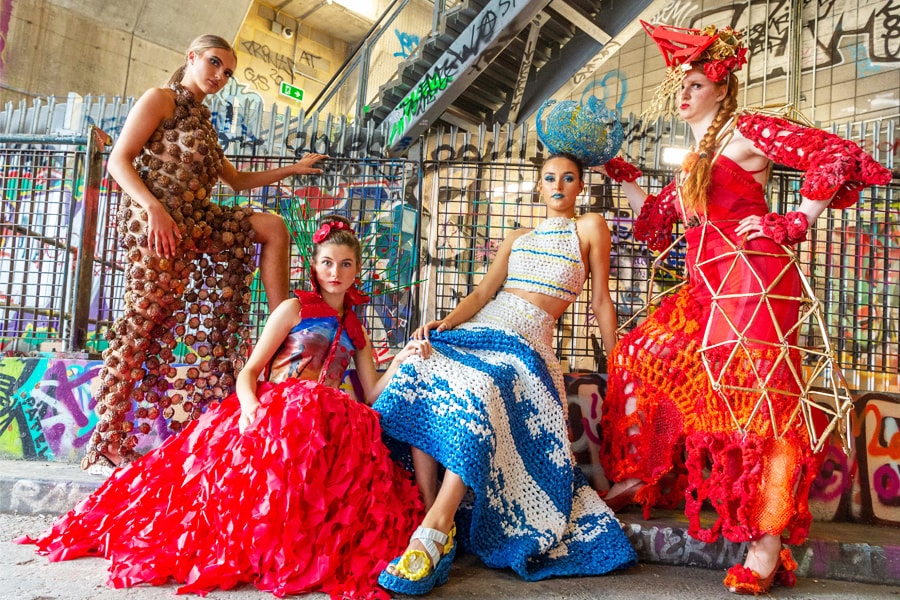
From landfill to wardrobe, how fashion is giving waste a new lease on life
Everything from subway seating and broken umbrellas to potato chips packets, socks and food waste are now materials of choice for a host of young talents who are trying to cut down on waste while raising public awareness about the issue of overproduction
 (File) Designers wear their couture creations made exclusively from discarded rubbish to launch Junk Kouture in the in London, England. Image: Antony Jones/Getty Images for Junk Kouture
(File) Designers wear their couture creations made exclusively from discarded rubbish to launch Junk Kouture in the in London, England. Image: Antony Jones/Getty Images for Junk Kouture
How can we reduce the impact of waste on the planet? Repulsive, dirty, even disgusting, waste never had good press, until the climate crisis forced fashion designers to get creative and reinvent. As a result, everything from subway seating and broken umbrellas to potato chips packets, socks and food waste are now materials of choice for a host of young talents who are trying to cut down on waste while raising public awareness about the issue of overproduction.
Nothing is lost, nothing is created, everything is transformed. This quote, attributed to Antoine Lavoisier, who formulated the theory of mass, takes on a whole new meaning today with the practice of upcycling, which involves giving a second life to any kind of object initially destined for the trash—and even enhancing or embellishing it. In fact, waste now even constitutes a not insignificant raw material for many fashion designers, who are determined to revolutionize the practices of one of the world's most polluting industries.
Four million tonnes of textile waste
According to a 2020 report by McKinsey, the global fashion industry's carbon footprint amounted to 2.1 billion tonnes of greenhouse gases in 2019, equivalent to about 4% of global greenhouse gas emissions. Excessive water consumption, usage of chemicals and waste all contribute to the industry's impact on the planet each year. For example, Europeans throw out some four million tonnes of textiles each year, 80% of which are discarded with household waste—i.e., in garbage cans—and end up in landfill or incinerators, or make their way to the African continent.Faced with the climate emergency, committed industry players are trying to revolutionize an entire sector through upcycling, with the aim of transforming fashion's waste into something more beautiful. Once maligned, and mostly discarded, waste materials—sometimes the most surprising—are given a new life to transform our wardrobes sustainably. Fabric scraps, airbags, sushi, umbrellas, seafood, cocoa bean husks, potato chips packets, and seating textiles are now among the raw materials being put to use by designers, entrepreneurs, or others keen to drive change and shape the ready-to-wear collections of tomorrow.
Also read: Your next fragrance could be made from upcycled elements







